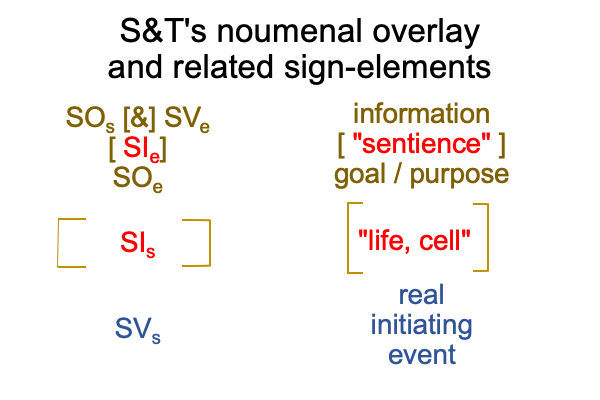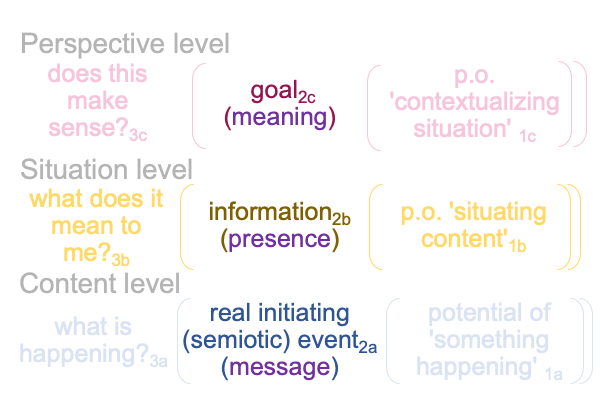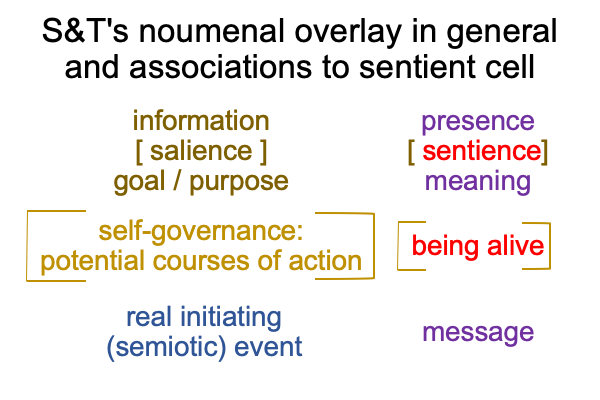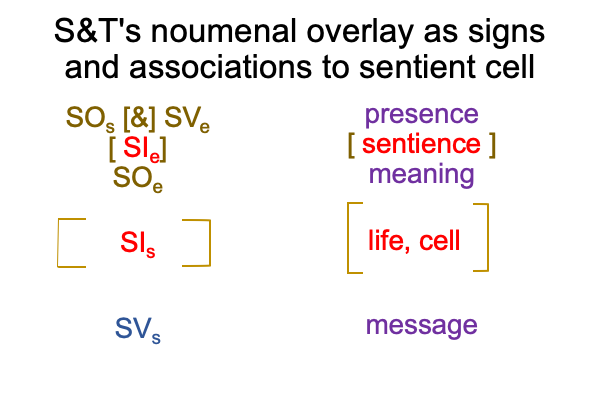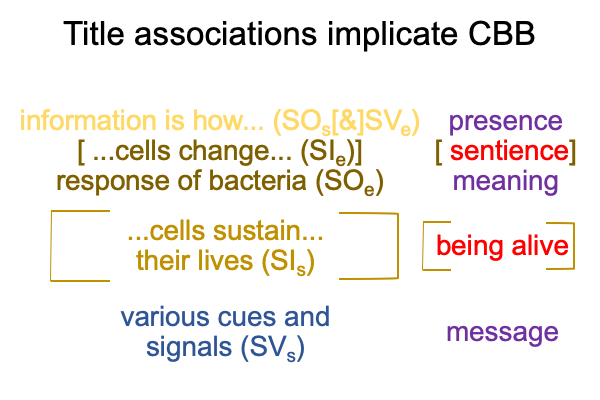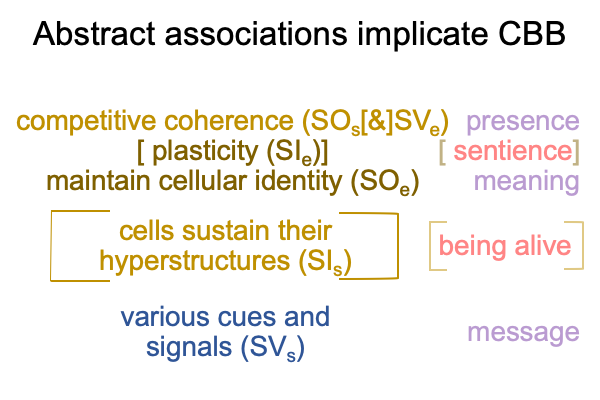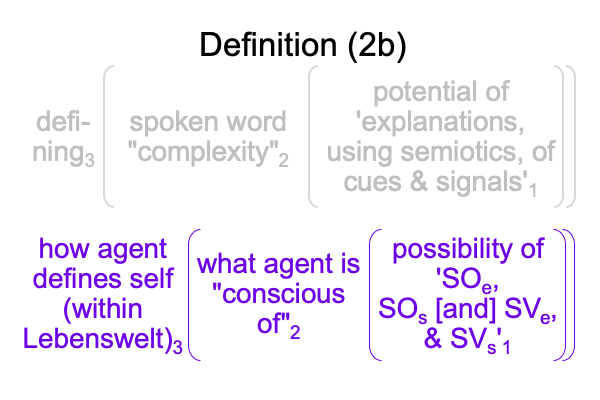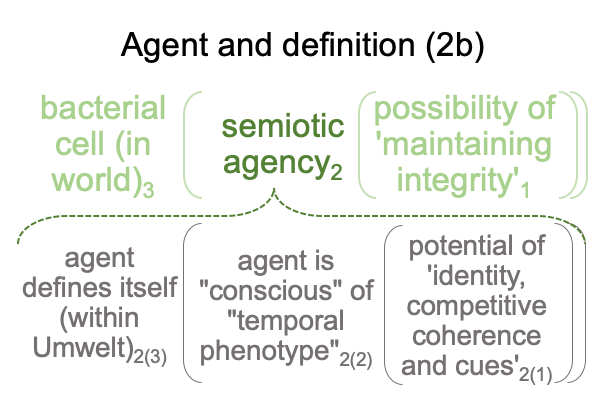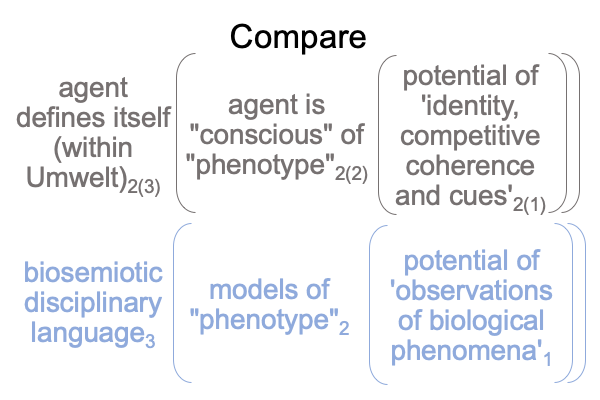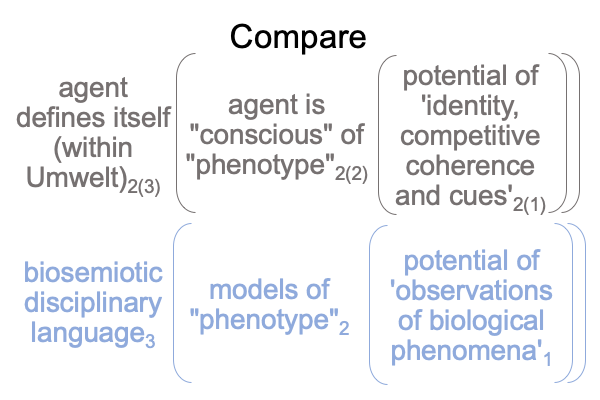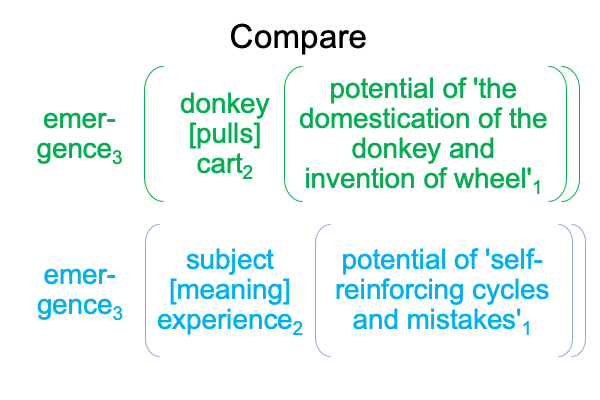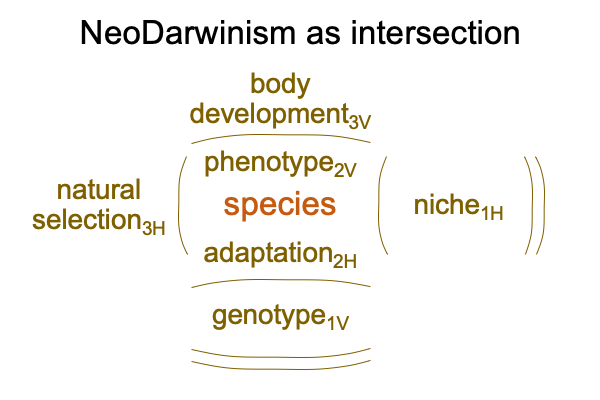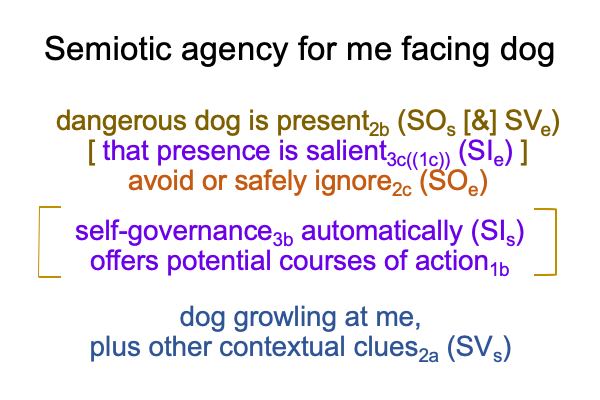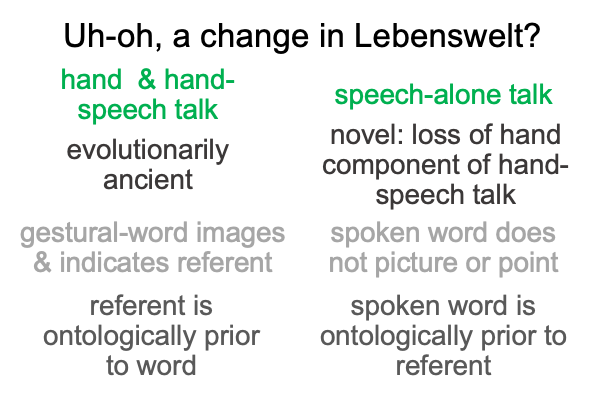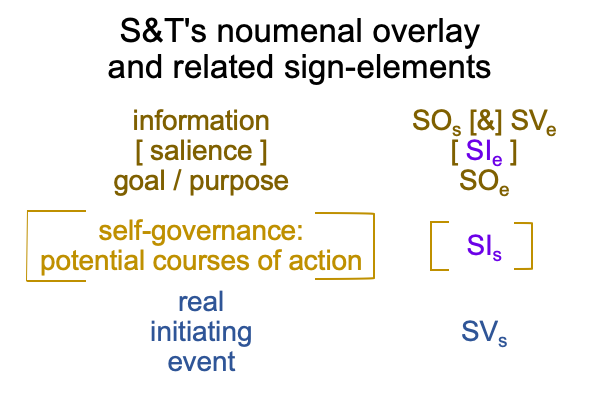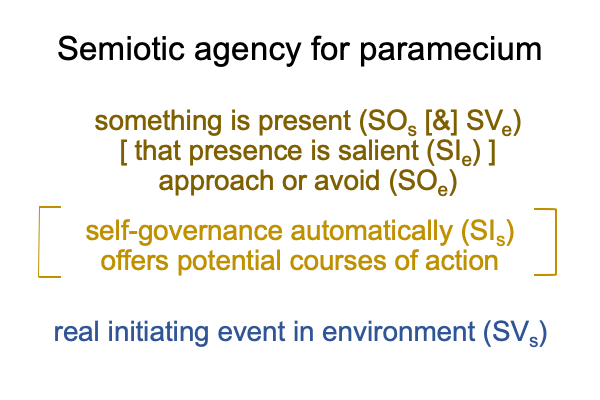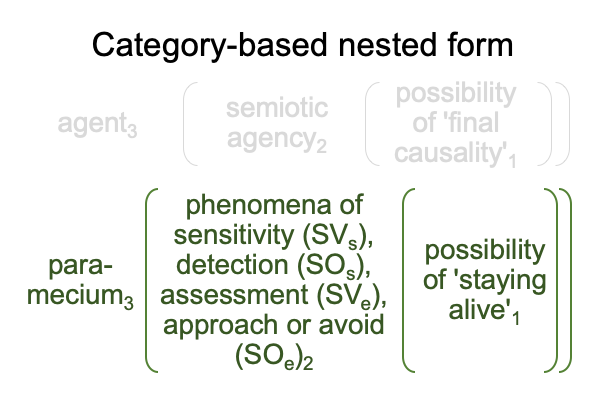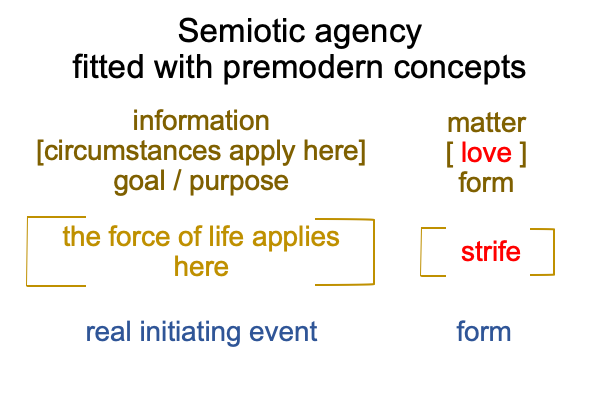Looking at Arthur Reber, Frantisek Baluska and William Miller Jr’s Chapter (2024) “The Sentient Cell” (Part 1 of 4)
0600 The text before me is chapter thirteen of Pathways (2024). See point 0474 for book details. The chapter title is “The Sentient Cell”. The chapter is the first in Part III, titled “Meaning in Organism Behavior and Cognition”. The chapter covers pages 281 to 298.
The authors of the chapter hale from diverse locations. Arthur Reber works in the Department of Psychology at the University of British Columbia, Canada. Frantisek Baluska is located at the Institute of Cellular and Molecular Botany, at the University of Bonn, Germany, and William Miller Jr. resides in the delocalized Bioverse Foundation.
0601 Delocalized?
Where else is one to locate bioversity?
0602 The abstract covers, in so many words, familiar territory (1 and 2).
First (1), semiotic agents3,1 are characterized by relationality, as well as thingness. The category-based nested form serves to illustrate.
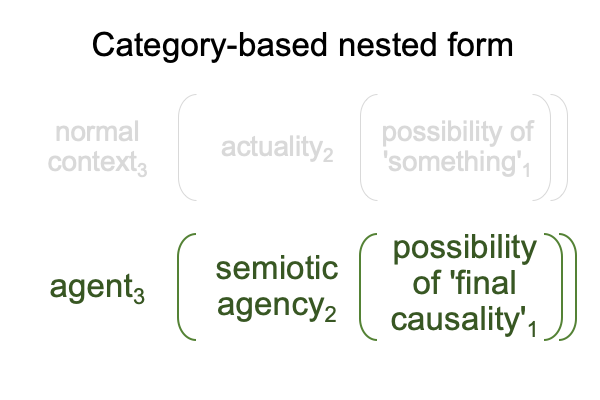
Semiotic agency is a dyadic “thing”.
The entire category-based nested form is a triadic “thing”.
0603 The category-based nested form includes all three of Peirce’s categories. Each category expresses its own logic. Category-based nested forms are fractal. These lessons are garnered from two e-articles, A Primer on the Category-Based Nested Form and A Primer on Sensible and Social Construction, by Razie Mah, available at smashwords and other e-book venues.
0604 Second (2), agents3 and their potentials1 may be arranged hierarchically. Lower-level subagents support the functionality of higher-level agency. At the same time, higher-level agents call upon the operations of lower-level subagents.
Peirce has a technical term for the way thirdness contextualizes secondness and secondness situates firstness. He calls it “precission”.
Some biologists offer a term for the way that higher-level agents appear to emerge from and situate lower-level agents. They offer the word, “control”. Unfortunately, “control” is already a technical term used in mechanical and electrical engineering. I wonder whether these applications of the physical sciences are appropriate analogies for biosemiotics.
0605 So, I propose a word familiar to modern politics, and more appropriate to entities that are born, live and die. The word starts like “precission”. The word ends like “tide”. And, the word conveys the impression of an agent1 calling subagents2 into a unified exercise of intentionity1.
The word is “presides”.
0606 A higher-level agent3 presides over subagents through the engagement of its semiotic agency2, arising from the potential of ‘something intentional’1.
Subagents are built into an agent’s semiotic agency2 and participate in its sign-interpretants of the specifying and exemplar sign-relations (SIs and SIe).
Here is a picture of semiotic agency and its sign-elements.
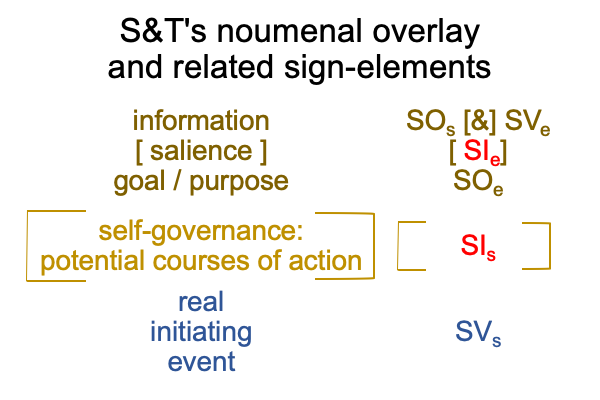
0607 The authors do not frame these now-familiar lessons (1 and 2) in terms of agent3((1) and semiotic agency2.
Instead, they marvel at the coterminality of life (cell) and awareness (sentience).
Why use the terms, “life” and “sentience”, as if they are separate concepts, the latter eventually qualifying the former?
Later in the article, the authors couple “sentience” and “consciousness” as if the latter is “what the cell would be if it were… um… subjectively experiencing the world like us (humans).”
0608 Of course, sentient cells are not “conscious” in the same way that humans are when awake (as opposed to asleep).
Clearly, the authors play a language game (typical for speech-alone talk in our current Lebenswelt).
0609 Sentience presides over life. Life supports sentience.
To me, these key terms associate to the sign-interpretants of the specifying and exemplar sign-relations (SIs and SIe).
0610 Here is how that looks.
